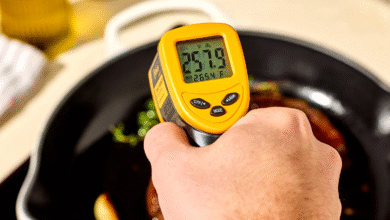DIY IoT Projects: Tips for Beginners to Build Successful Prototypes

DIY IoT Projects: Tips for Beginners to Build Successful Prototypes? Welcome to the exciting world of DIY IoT projects! If you’ve ever been curious about creating your own Internet of Things (IoT) prototypes but didn’t know where to start, you’re in the right place. In this guide, we’ll walk through the essential tips and steps for beginners to build successful IoT prototypes that bring your ideas to life.
Introduction to DIY IoT Projects
Embarking on a DIY IoT project opens up a realm of possibilities. From smart home devices to environmental sensors, IoT allows you to connect and control devices through the internet. The satisfaction of building something functional from scratch is both empowering and educational.
Understanding IoT for Beginners
Before diving into the practical aspects, it’s crucial to grasp the fundamentals of IoT. Understand the concept of interconnected devices communicating seamlessly, forming the backbone of IoT projects. This understanding lays the foundation for your journey into the world of IoT.
Essential Components for DIY IoT Projects
Selecting the Right Microcontroller
Choosing the right microcontroller is like selecting the brain for your project. Explore options like Arduino or Raspberry Pi, keeping in mind your project’s complexity and requirements.
Sensors and Actuators
Sensors gather data, and actuators perform actions based on that data. Select sensors and actuators that align with your project goals, ensuring they’re compatible with your chosen microcontroller.
Choosing a Suitable IoT Platform
Cloud-Based Platforms
Explore cloud-based platforms for seamless data storage and access. Platforms like AWS IoT or Google Cloud IoT offer robust solutions for managing your IoT projects.
Edge Computing Solutions
For projects requiring real-time processing, consider edge computing solutions. Edge platforms process data locally, reducing latency and enhancing the overall performance of your IoT devices.
Programming Basics for IoT Prototypes
Coding Languages for Beginners
Start with beginner-friendly coding languages like Python or JavaScript. These languages provide a gentle introduction to programming for IoT applications.
Basics of IoT Programming
Understand the basics of IoT programming, including data handling, communication protocols, and interfacing with sensors and actuators.
Read More: Remote Work Revolution: Tips for Setting Up Your IoT Home Office
Building a Simple IoT Prototype Step by Step
Project Ideation
Brainstorm and define your project’s purpose. Whether it’s a weather station or a smart plant watering system, clarity in ideation paves the way for successful execution.
Prototyping Tools and Techniques
Utilize prototyping tools like breadboards and 3D printing to bring your ideas into the physical realm. Test the feasibility of your design before moving to the final build.
Common Challenges in DIY IoT Projects
Connectivity Issues
Address common connectivity challenges by optimizing your network setup. Ensure a stable connection between devices for seamless communication.
Power Management
Efficient power management is critical for IoT devices. Explore low-power modes and alternative energy sources to extend the lifespan of your prototypes.
Tips for Troubleshooting and Debugging
Debugging Tools and Techniques
Equip yourself with debugging tools to identify and resolve issues promptly. Learning to troubleshoot is an integral part of the prototyping process.
Online Communities and Resources
Join online communities and forums dedicated to IoT enthusiasts. These platforms provide valuable insights and solutions to common problems faced during DIY IoT projects.
Testing and Iterating Your IoT Prototype
Importance of Testing
Thorough testing ensures the reliability and functionality of your prototype. Test under various conditions to simulate real-world scenarios.
Iterative Development
Embrace an iterative development approach. Use test results to refine your design, making incremental improvements with each iteration.
Showcasing Your DIY IoT Project
10.1 Building a Demo
Create a compelling demo showcasing the features and capabilities of your IoT prototype. A well-presented demo enhances your project’s appeal.
10.2 Documenting Your Process
Documenting your journey is crucial for future reference and sharing your knowledge with the community. Detailed documentation aids in troubleshooting and encourages others to learn from your experiences.
Safety Considerations in IoT Prototyping
Prioritize safety when working with electronic components. Follow best practices to prevent accidents and ensure the longevity of your IoT devices.
Cost-Effective Approaches for DIY IoT Projects
Explore cost-effective solutions without compromising on quality. Budget-friendly components and open-source software can significantly reduce project costs.
Future Trends in IoT Prototyping
Stay updated on emerging trends in IoT. Technologies like 5G and edge computing are shaping the future of IoT, presenting exciting possibilities for DIY enthusiasts.
Conclusion
Embarking on DIY IoT projects as a beginner may seem daunting, but with the right guidance, it becomes an exhilarating journey of learning and creativity. Follow these tips, embrace challenges, and enjoy the process of bringing your IoT ideas to life.











